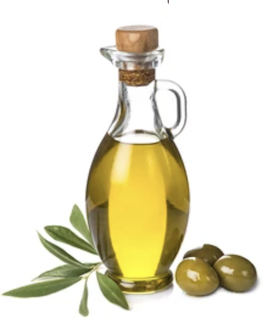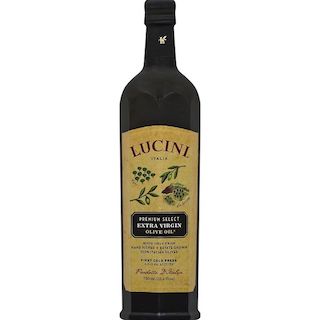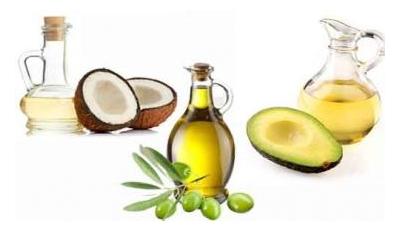Olive oil contains omega-3s, omega-6s, along with vitamins K and E, all acting to support a healthy body. Incorporating olive oil into your diet can be an easy way to support heart health, healthy blood pressure levels, and a healthy lifestyle.

Olive Oil Supports Health With Vitamins

Olive oil contains many components that help support a healthy lifestyle, like supporting heart health. The main beneficial components in olive oil are vitamin E, vitamin K, omega-3s, and omega-6s. Vitamin E is a member of the fat-soluble vitamin family and is an antioxidant. This means it promotes the destruction of free radicals in the body that can cause oxidative stress. Oxidative stress has been linked to cell damage, fatty tissue damage, and even DNA damage. Antioxidants are created not only in the human body, but in plants and animals as well. An intake of plants rich in vitamin E can help support free radical destruction and promote overall health.
Vitamin K is another fat-soluble vitamin and helps the body create proteins. These proteins are heavily involved in the blood clotting process and help support healthy bone and tissue development. A deficiency in vitamin K typically presents as bleeding or delayed wound healing, while an overabundance can be linked to blood clotting and other related issues. Vitamin K is commonly found in leafy green vegetables and dark berries, which is why people already on blood thinners are typically told to avoid these foods.


Olive Oil provides Omega 3 & 6
Omega-3s are unsaturated fats and are considered “essential fats.” This means that your body cannot make them on its own, but they’re necessary for certain bodily processes. They are most abundantly found in the walls of cell membranes. Omega-3s are also found in high levels in the eye, brain, and even sperm cells. At appropriate levels, they are believed to promote health in those areas. Therefore, it is important to consume foods or supplements that give your body the proper amount of omega-3s.
Omega-6s are also unsaturated fats. They have been shown to promote the stimulation of hair growth, skin growth, bone health, and metabolism regulation. They have also been linked in several studies to support reproductive health. While omega-3s support anti-inflammation, omega-6s support inflammation. Since they are both important for bodily functions, a balance must be maintained between them. The Mediterranean diet, for example, promotes a healthy balance between the two, and following it is one way to optimize your omega-3 and omega-6 ratio.


EVOO is Healthier
Extra virgin olive oil (EVOO) is commonly thought to be a healthier alternative to regular olive oil. The main difference between them is how they are made. EVOO is made from “pure” cold-pressed olives that have been ground into a paste and pressed to extract the oil. Regular olive oil is made from a blend of cold-pressed olives and processed oils. They’re prepared differently because using only pure cold-pressed olives takes a lot longer than using processed oils.
EVOO it is the least processed of the olive oils and involves zero heat to make. This produces the more abundant green color and fruity aroma compared to regular olive oil. It must even be certified to be pure EVOO before being labeled as such. As a result, EVOO is typically more expensive than regular olive oil, although regular olive oil will last longer due to its processing.
The different manufacturing processes result in not only different colors and tastes between the olive oils, but also different health effects. One of the reasons EVOO is considered healthier is that it retains more vitamins, fats, and polyphenols (another type of antioxidant) than regular olive oil due to how it’s processed.

Healthy Omega Ratio is 8:1
Regular olive oil is a source of the two main types of omega fats — omega-3s and omega-6s. As mentioned above, there are many reasons to keep a healthy balance between the two. To do this, you must know the ratio of each within a serving of oil.
A serving of regular olive oil is one tablespoon, and within that tablespoon there is typically 10.5 g total of omega fats. Within that amount, 9.8 g are reported to be omega-6s and 0.8 g are omega-3s. This makes the ratio of omega-6s to omega-3s about 12:1.
Extra virgin olive oil also contains omega-6s and omega-3s, but in different ratios. Ratios have been reported between 8:1 and 10:1, depending upon the specific manufacturer. For reference, a healthy ratio of omega-6s to omega-3s is recommended to be between 1:1 and 8:1, but most Western diet consumers will ingest a ratio between 15:1 and 17:1. Each brand can vary slightly in their amounts, so it is always recommended to check their individual components.

References
- De Santis S, Cariello M, Piccinin E, Sabbà C, Moschetta A. Extra Virgin Olive Oil: Lesson from Nutrigenomics. Nutrients. 2019;11(9):2085.
- Estruch R, Ros E, Salas-Salvadó J et al. Primary Prevention of Cardiovascular Disease with a Mediterranean Diet Supplemented with Extra-Virgin Olive Oil or Nuts. New England Journal of Medicine. 2018;378(25):e34.
- Food Data Central. US Department of Agriculture. https://fdc.nal.usda.gov/fdc-app.html#/food-details/1103861/nutrients. Published 2022. Accessed January 27, 2022.
- Food Data Central. US Department of Agriculture. https://fdc.nal.usda.gov/fdc-app.html#/food-details/748608/nutrients. Published 2022. Accessed January 27, 2022.
- Gaforio J, Visioli F, Alarcón-de-la-Lastra C et al. Virgin Olive Oil and Health: Summary of the III International Conference on Virgin Olive Oil and Health Consensus Report, JAEN (Spain) 2018. Nutrients. 2019;11(9):2039.
- Patterson E, Wall R, Fitzgerald G, Ross R, Stanton C. Health Implications of High Dietary Omega-6 Polyunsaturated Fatty Acids. J Nutr Metab. 2012;1-16.
- Romagnolo D, Selmin O. Mediterranean Diet and Prevention of Chronic Diseases. Nutr Today. 2017;52(5):208-222.
- Wardhana E, Surachmanto E. The Role of Omega-3 Fatty Acids Contained in Olive Oil on Chronic Inflammation. Acta Med. Indones. 2011; 43(2)138-143.
-
Triglyceride Omega 3
By Dr. AlishaMay 31, 2022 -
Omega-3 For Dry Eyes
By Dr. AnnaJune 28, 2022 -
Algae Omega-3
By Dr. AnnaJune 28, 2022 -
Omega 3 Acid Ethyl Esters – Time to Upgrade Omegas
By Chemist BillMarch 8, 2022 -
Coconut Oil vs Olive Oil vs Avocado Oil
By Dr. AnnaAugust 14, 2022 -
Olive Oil for Hair
By Dr. KarenAugust 14, 2022



Search the blog
Article Categories
- All Articles (95)
- Rating Charts (1)
- Beauty & Skincare (17)
- FAQ (0)
- Hair Care (9)
- Health & Wellness (12)
- Anti-Aging (4)
- Kid's Health (0)
- Makeup (2)
- Men's Health (2)
- Oral Care (3)
- Sunscreen (7)
- Skin Tools & Treatments (10)
- Supplements (26)
- Videos (0)













